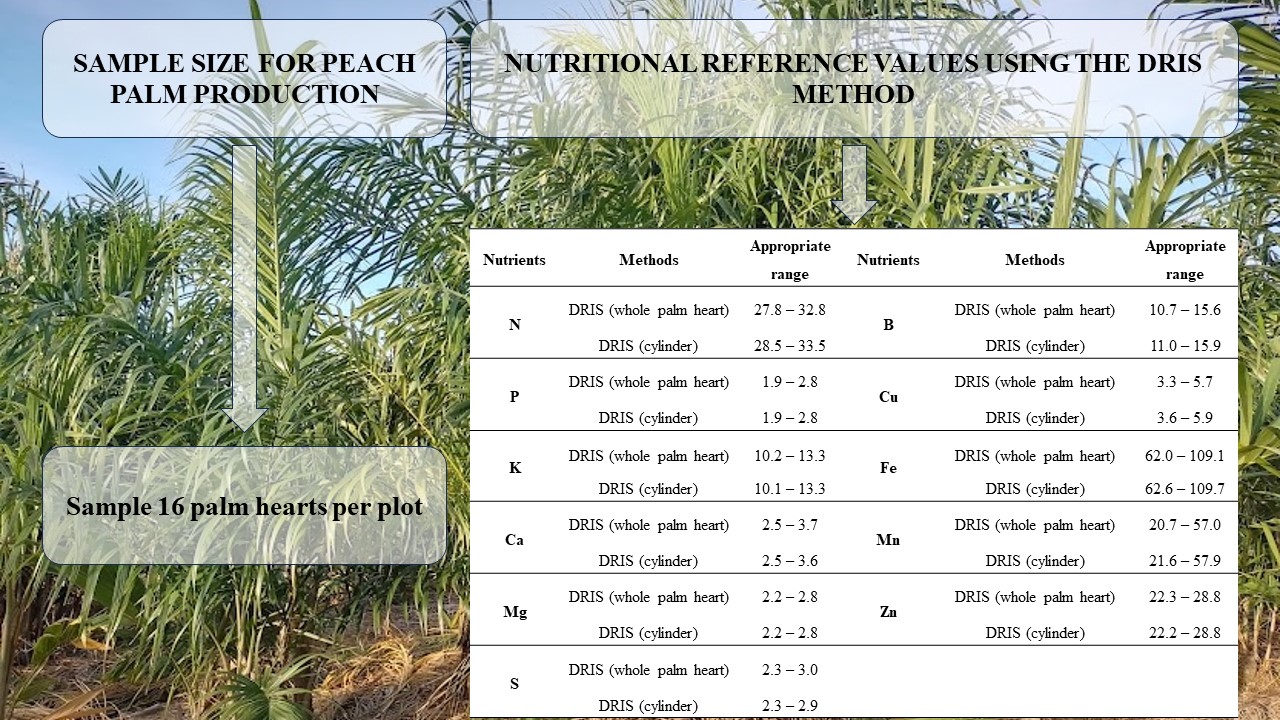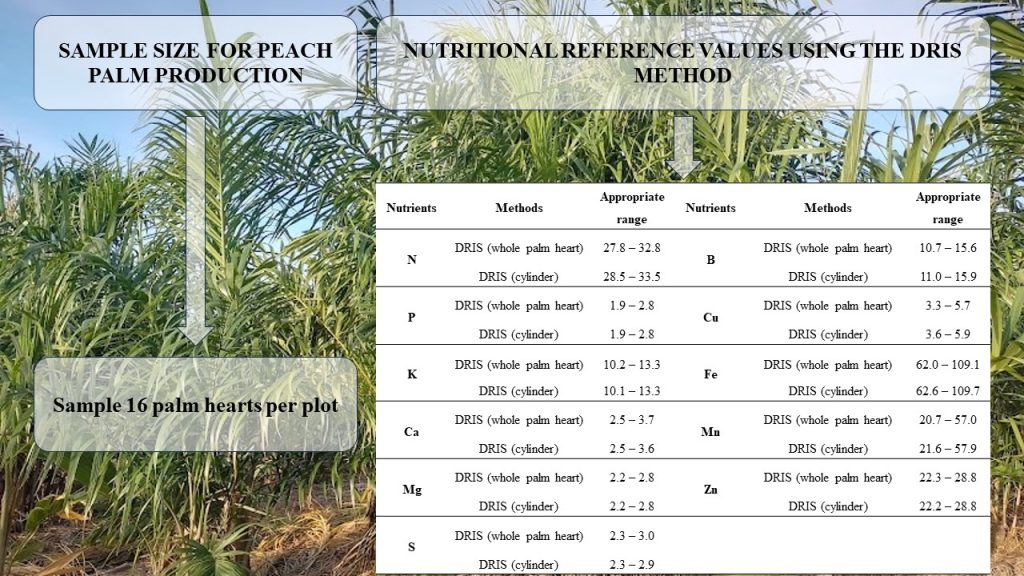Rev. Bras. Ciênc. Solo.2024;48:e0230076.
Nutritional reference values using the DRIS method and sample size for peach palm production
08/abr/2024
DOI: 10.36783/18069657rbcs20230076
Resumo Gráfico

Destaques
Determining productivity before harvest allows for better decision-making.
For a sampling error of 5 to 10 %, it is necessary to sample 16 palm hearts per plot.
Nutrient sufficiency ranges can be used for peach palm in Ribeira Valley.
ABSTRACT
One of the challenges in the peach palm production system is the interpretation of leaf analyses and the adaptation of fertilization recommendations. Tools that enhance fertilizer use efficiency are therefore needed. This study aimed to establish norms for evaluating the nutrient status of peach palms using the Diagnosis and Recommendation Integrated System (DRIS) and to determine the adequate number of palm heart samples necessary for a more accurate assessment of productivity. Production, leaf nutrient content, and soil fertility data were collected from 102 commercial stands of peach palm in the Ribeira Valley, state of São Paulo, Brazil, between 2015 and 2020. Adequate number of individual samples (palm hearts) to be collected per stand for productivity assessment was estimated. DRIS norms were established by dividing the database into high-yield (reference population) and low-yield subpopulations, using average productivity as a criterion. By assuming an acceptable error of 5 to 10 % for the assessment of peach palm productivity, taking into account total palm heart weight and/or the weight of cylinders, respectively, 16 plants per stand should be sampled. DRIS was not sensitive enough to diagnose differences in the probability of positive response to fertilization; however, the P, K, Ca, Mg, S, B, Fe, Cu, Mn and Zn contents were positively correlated with the respective nutrient indices.
485

